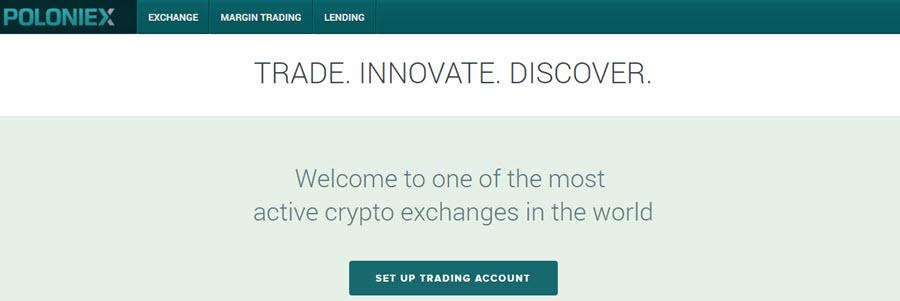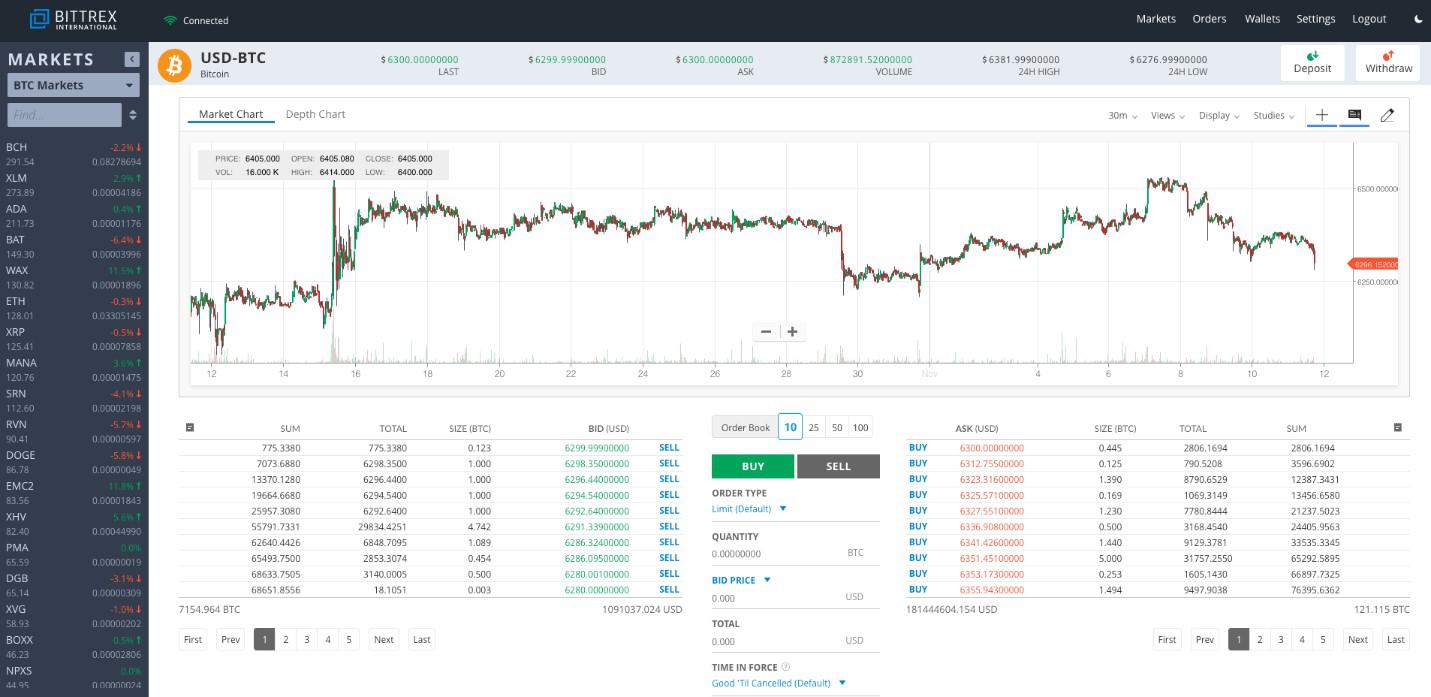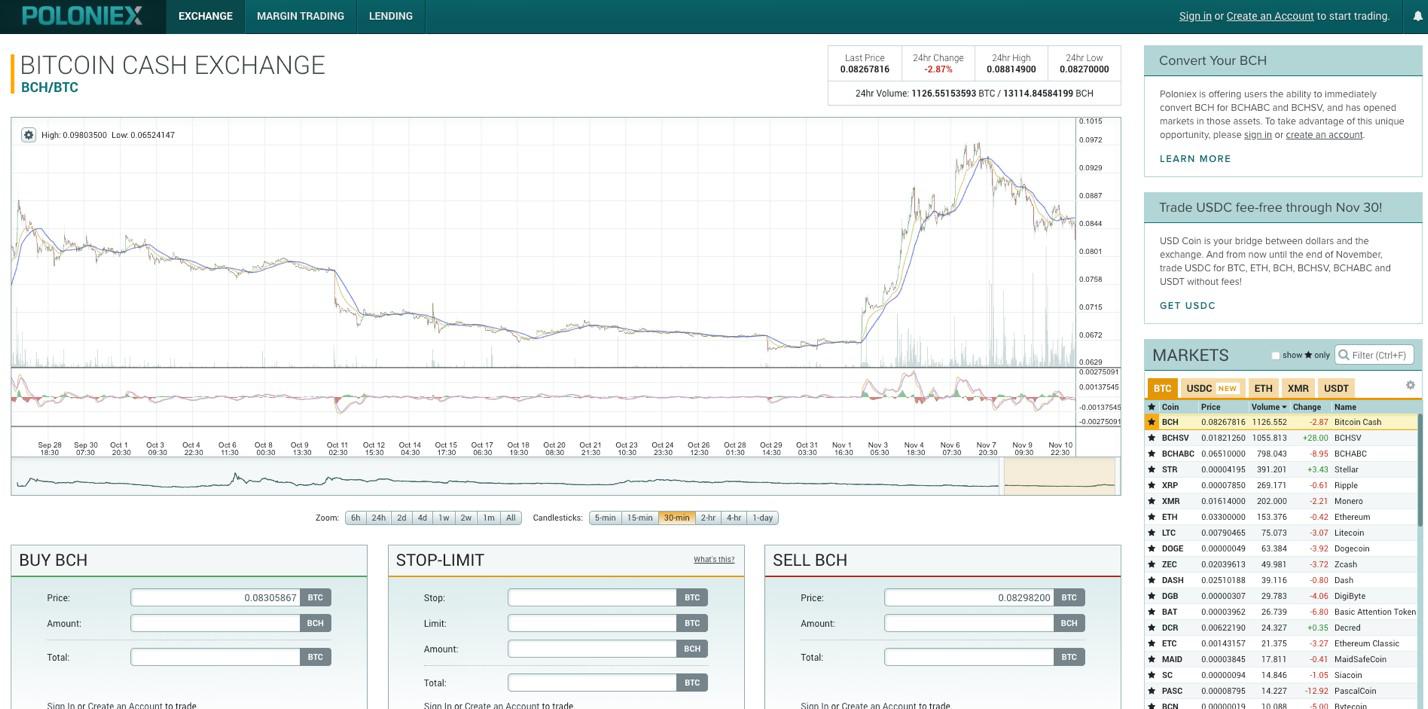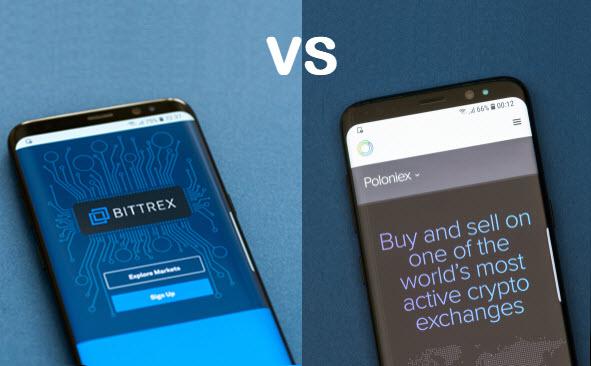Bittrex vs Poloniex Comparison: Which Cryptocurrency Exchange Shines The Brightest?
Although the cryptocurrency market has been flooded by the presence of new exchanges over the last two years, many of the earliest fiat-to-crypto trading platforms remain within the top 100 global as measured by daily trading volumes. Among some of the most well-known names are Bittrex and Poloniex, each of which were launched in early 2014 following a wave of bitcoin appreciation and momentum higher that pushed the cryptocurrency beyond $1,000 per coin for the first time. Both are also American companies, Bittrex with a headquarters in Seattle and Poloniex in Delaware.

Even though markets trended sideways for a substantial period after their founding, both Bittrex and Poloniex expanded their features, functionality, and supported cryptocurrencies to remain relevant in the evolving cryptocurrency environment. At present, Bittrex and Poloniex are the number 38 and 45 exchange by daily trading volume (as of 08/11/2018), at $43 million and $33 million, respectively.

In a faceoff between these two formidable services, only one can take the top spot in terms of all-around best experience. We compared each of the two popular cryptocurrency exchanges side-by-side to determine the winner of the battle for Best Trading Platform.
Key Information Comparison
Category | Bittrex | Poloniex |
| Website: | Go to Bittrex.com | Go to Poloniex.com |
| Mobile App: | Yes (iOS/Android) | |
| Fiat Deposit: | ||
| Supported Fiat: | USD | |
| Fiat Withdrawal: | ||
| Reported Hacks? | ||
| Fees: | 0.25% flat rate per trade | 0.20% for lowest tier; 0.10% for highest |
| Transfer Limits: | $1,000 deposit minimum for wire, $10 withdrawal minimum | 0.5 ETH minimum for Deposit |
| Payment Methods: | Wire transfer | Crypto deposit |
| Supported Cryptos: | Bitcoin, Ether, Tether, 250+ | Bitcoin, Ether, Litecoin, Ripple, 90+ |
| Company Location: | United States | United States |
| Supported Countries: | Any country except those that have been sanctioned by US laws or regulations | Any country except those sanctioned by US, UK, or EU legally |
Funding Options
Both exchanges let users fund their accounts in different ways in order to keep their trading faster and more convenient. Bittrex recently introduced fiat deposit for both its corporate and personal accounts via wire transfer. This process requires being verified for a full account as well as connecting the user’s bank account to Bittrex. Once you’ve completed this process, you can freely transfer funds to your wallet directly, though the deposit minimum for individual accounts is currently $1,000. Otherwise, users can directly deposit their favorite cryptocurrencies directly into their accounts.
Poloniex still does not allow fiat deposits, although users can work around this issue by converting their US Dollars directly through Circle, which owns the exchange. Once converted to a permitted cryptocurrency, users can deposit their funds normally and begin trading as soon as they are verified.
Interface
Both exchanges have a slightly different take on the standard trading interface found elsewhere, with an assortment of trading functionalities separated into different windows above the fold in your browser window. Using either exchange takes some familiarity with them, and has a learning curve, but both make trading a breeze for initiated traders. However, Bittrex will be much easier to grasp for beginners because all prices are denominated in dollars (given the exchange’s recent integration of fiat), while Poloniex defaults to BTC as a counter currency. One can get around this by selecting the USDC markets instead.

For advanced users, Bittrex will be more suitable given that an impressive variety of indicators and oscillators are accessible immediately. Bittrex also has a cleaner, more modern dashboard, which is nice to look at but might be off-putting to someone who likes a classic design more. It is also missing a market depth chart, which is like a visual order book that some prefer.

Poloniex has fewer options regarding technical analysis, but does include moving averages and Bollinger bands, as well as a market depth chart (which Bittrex lacks). Its interface is clean and there is never a question of where anything is, which gives it a familiar feel.
Trading Fees
Poloniex applies a slightly lower rate of 0.20% to the largest group of their maker/taker fee schedule: those with a trade volume of less than $500,000 on a 30-day basis. However, this rate also changes as one’s trading volumes expand, and whether they’re a market maker or a market taker (maker fees are 0.10% maximum). Fees may be as sharp as 0.10% for takers and 0.00% for maker orders.
In terms of trading fees, Bittrex lands on the other end of the spectrum, and merely charges a flat fee of 0.25% on every trade. This might be preferable to those with large trading volumes, but few others, putting Poloniex ahead in this category.
Available Cryptocurrencies
Both Bittrex and Poloniex offer a plethora of cryptocurrency trading pairs, but Bittrex commands the top spot with 258 relative to Poloniex’s 97. By adopting a similar strategy to exchanges like Binance that list as many coins as possible, Bittrex hosts many smaller projects’ tokens which aren’t found elsewhere. Poloniex also boasts a respectable variety of the same coins but only those with a stronger market presence and higher capitalization. Traders who want exposure to low-volume altcoins will therefore appreciate Bittrex more so than Poloniex.
Company Trust
The public trusts both Bittrex and Poloniex with confidence. Bittrex is seen as more trustworthy given its clean and hack-free history (Poloniex can’t say the same), plus the experienced team behind it. Both exchanges have responsive customer support and there are no recorded instances of fraud or abuse in their economies.
Security
Bittrex is known as one of the safest exchanges around and was founded with this principle in mind. To date, it hasn’t suffered any hacks whatsoever, which is rare even among the wealthiest and most established platforms. Even if Bittrex was breached, it has stated that 90% of its funds are held in cold storage (offline), so hackers would have little to steal, anyway.
Poloniex is safe as well, and like Bittrex (and every other exchange) offers 2-factor authentication. However, this hasn’t kept Poloniex entirely secure. In the same year it was founded, Poloniex was hacked for around 12.5% of the funds it stored. Despite the incident, Poloniex refunded its traders in full and has since been hack-free.
Conclusion
For its expansive list of supported cryptocurrencies, Bittrex has surprisingly few special features. It deserves respect for its spotless security record, however, which might be enough to tip the scales for some. The interface is more aesthetically pleasing and organized than Poloniex’s, but Poloniex comes out ahead in the perks department. Its fees are also slightly cheaper.
Additionally, now that one can display charts and lists in USDC, it’s much easier to make sense of Poloniex’s dashboard, even with the complication of margin lending and trading. This is another point in Poloniex’s favor—margin lending and margin trading enable traders to lend their balances to each other and charge interest.


